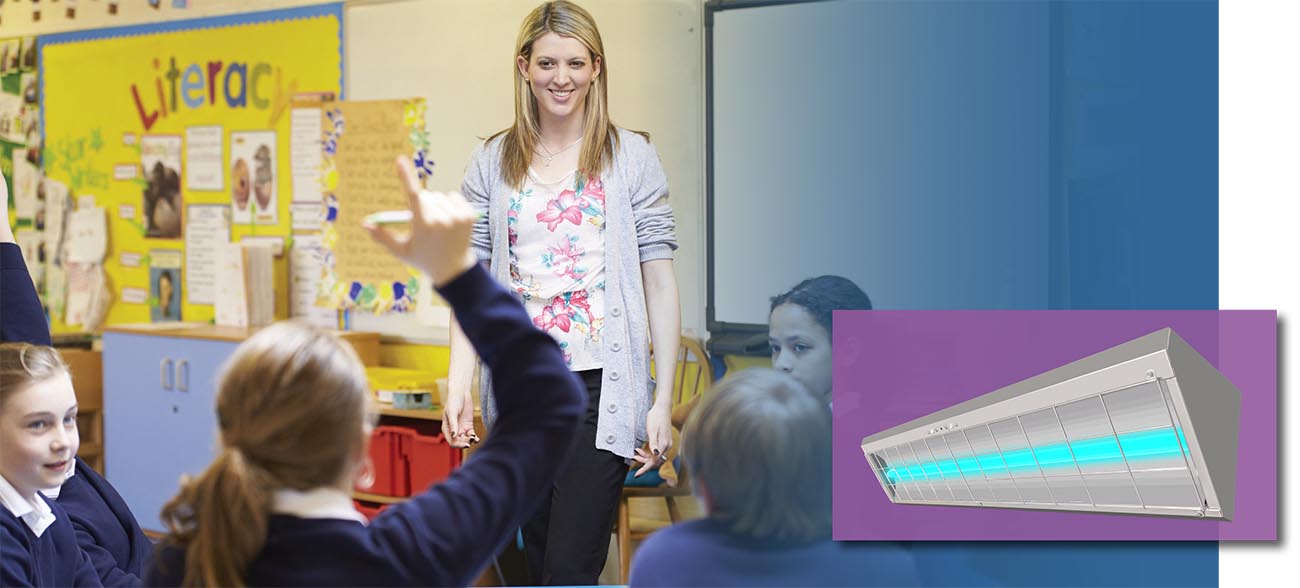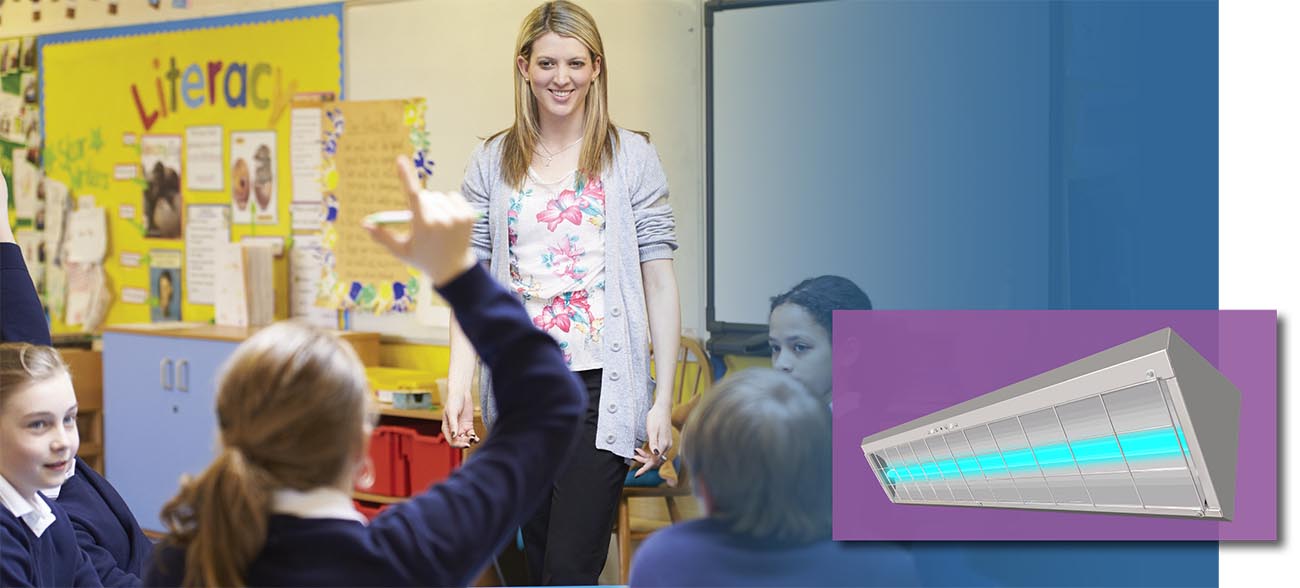
The UVFocus GCD is a direct germicidal luminaire for unoccupied rooms that utilizes 254nm UVC illumination. When used correctly, and given the right amount of time, 254nm UVC can kill over 99 percent of bacteria and viruses – including SARS-CoV-2.
One possible application for the GCD would be in a classroom setting. With many kids going back to school in the midst of the coronavirus pandemic, it is critical to look at every possible method of disinfection to keep them as safe as possible. The GCD is capable of producing UVC that will inactivate SARS-CoV-2, but the inactivation could vary greatly depending on many factors. Our team can design a lighting layout to ensure the maximum effectiveness of any of our UVFocus pathogen eradicating products.
The below image illustrates the GCD in use in a typical classroom. This room is 20′ by 30′, with 8.5′ ceilings. We designed this space with four GCDs – two in the front of the room, and two in the back. The first image here is from the students’ view, looking toward the front of the room. You can see the irradiance scale on the left.
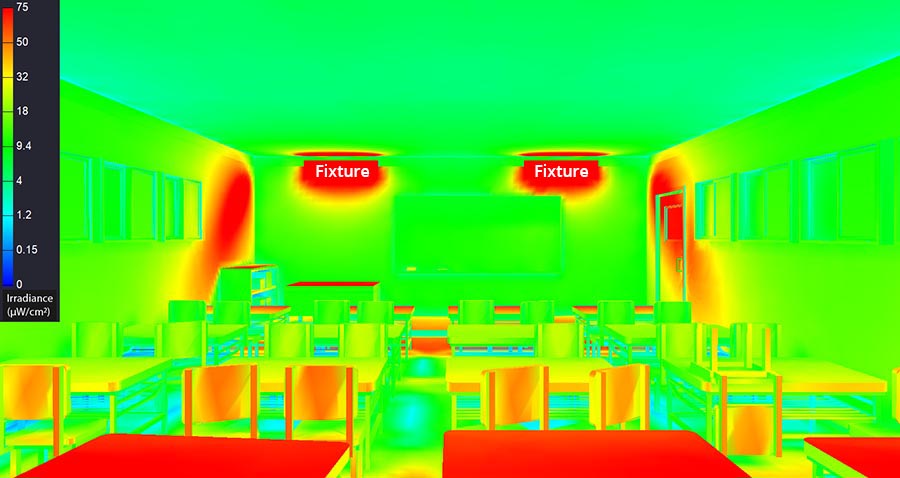
And this image shows the view from the side of the classroom:
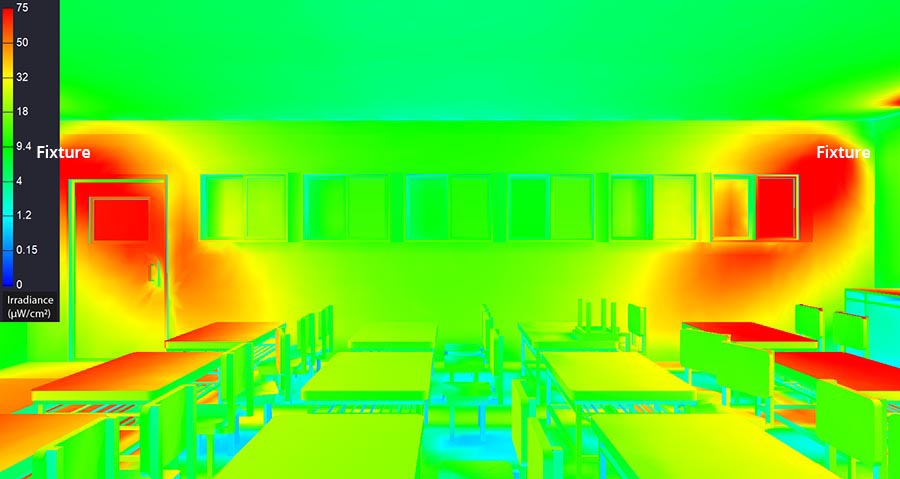
A dose of 5 mJ/cm2 is required for a 99 percent reduction in SARS-CoV-2. A dose of 22 mJ/cm2 is required for a 99.9999 percent reduction in SARS-CoV-2.
Dosage guidelines are an estimate based on research by Signify and the National Emerging Infectious Diseases Laboratories at Boston University (this article from LEDs Magazine discusses this research). It is important to note that real world conditions – including, but not limited to, temperature, humidity, medium and particle size – can impact the effectiveness of the irradiation dosage.
The below is a point-by-point analysis of the sample classroom. The numbers in this diagram refer to the irradiance in μW/cm2. This measurement is at the floor level.
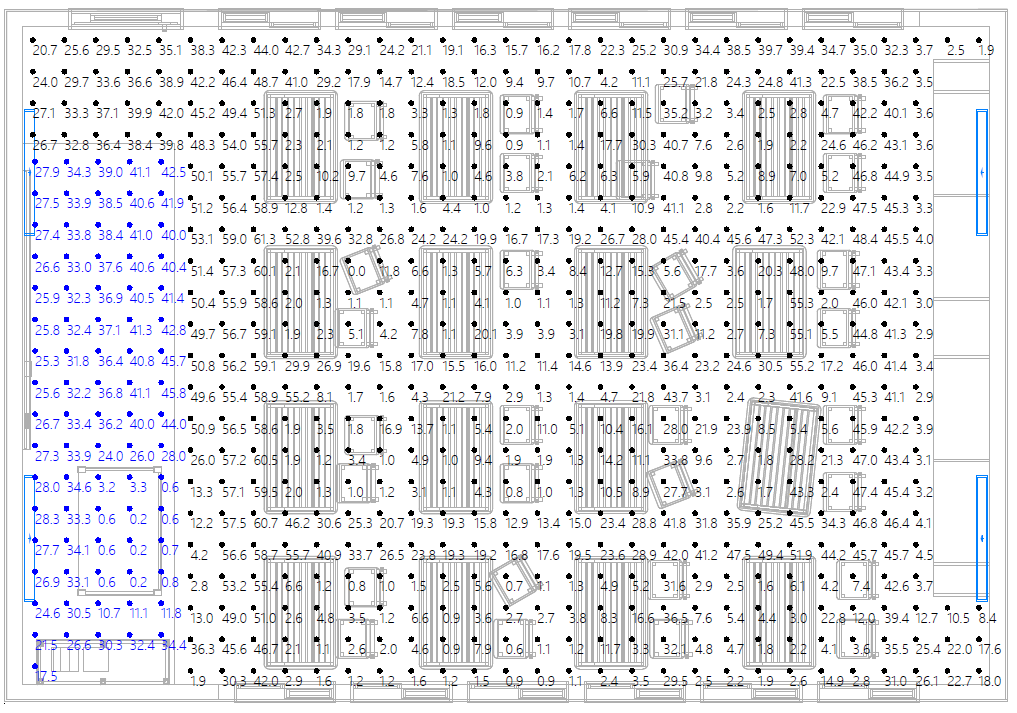
Using the numbers in the diagram, refer to the table below to see the duration needed to reduce SARS-CoV-2 at a given point:

Here’s a simplified explanation on how to read this. In the below image, we have taken a snippet of the full point-by-point diagram. This is near the front of the classroom:
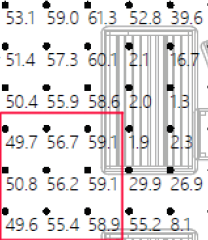
In the areas squared off in red, the lowest irradiation level is at 49.6 μW/cm2. This means it would take just over 1.67 minutes for a 99 percent reduction in SARS-CoV-2 at that location. It would take just over 7.3 minutes for a 99.9999 percent reduction in SARS-CoV-2.
At the highest point of irradiance – 59.1 μW/cm2 right around the front of the desk – it would take almost 1.39 minutes for a 99 percent reduction, and just over 6.1 minutes for a 99.9999 percent reduction.
So we have the irradiance levels at the floor, but what about surfaces, like the desktops? The below point-by-point shows irradiance at the desktop surface level, and on the chairs in the classroom:
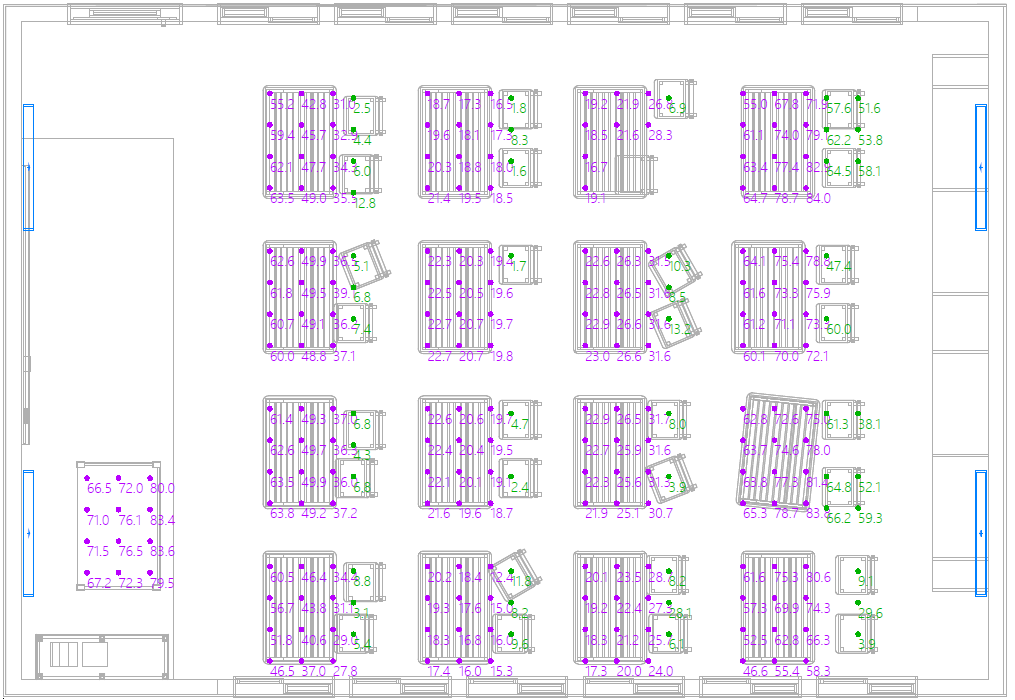
Lets take a look at a couple of the desks in the center of the room. The desk in the front row is showing irradiance levels between 36.2 and 62.6 μW/cm2. Using the same chart above, we can see a SARS-CoV-2 reduction of 99 percent in somewhere between around 1.39 and 2.38 minutes. We should get a 99.9999 percent SARS-CoV-2 reduction in about 6.1 to 10.5 minutes. The chairs at the desk are at 5.1 and 7.4 μW/cm2 – so about 16 minutes for a 99 percent reduction and over 73 minutes for 99.9999 percent reduction on the first desk, with the desk at 7.4 μW/cm2 being a little quicker.

In the second row, the desktops are between 19.4 and 22.7 μW/cm2. – so roughly five minutes for a 99 percent reduction, and around 20 minutes for a 99.9999 percent reduction. However, because the chair surface is obscured by the desk, the irradiance level there is only 1.7 μW/cm2. That would take over 55 minutes for a 99 percent SARS-CoV-2 reduction, and over 244 minutes for a 99.9999 percent reduction. So for the chairs, you may want to take special care to make sure they are regularly cleaned by other means. Also, you could pull the chairs further away from the desk before energizing the fixtures so they’ll receive more irradiance.
Objects in any room, such as furniture and equipment, may cause shadowing and reduce the effective dose on some surfaces. As is the case with any UV lighting application, GCDs should be used in conjunction with regular cleaning to maximize disinfection.
Here is another graphic that shows the irradiance dose for the air in the room:
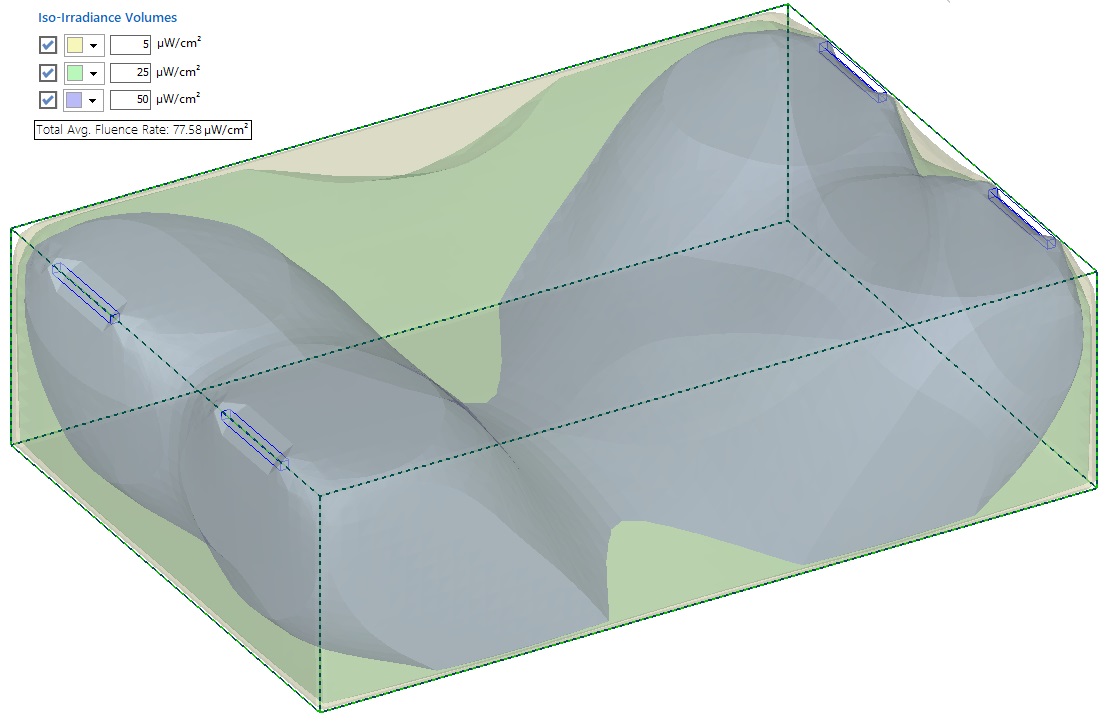
Note: GCDs and other direct UVC products are intended to be in used in unoccupied rooms only. Click here to learn more about UVFocus safety.
Our team has the technology and expertise to design a layout custom to your application. Contact us today to get started.
Click here for a .pdf version of this case study.
Click here to learn more about the GCD germicidal direct luminaire.
